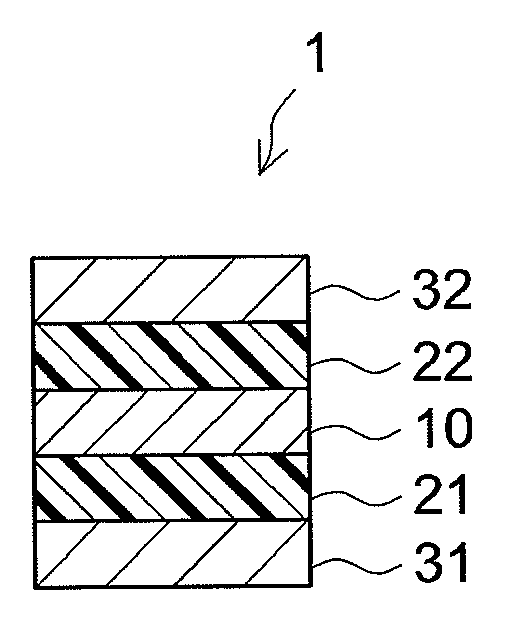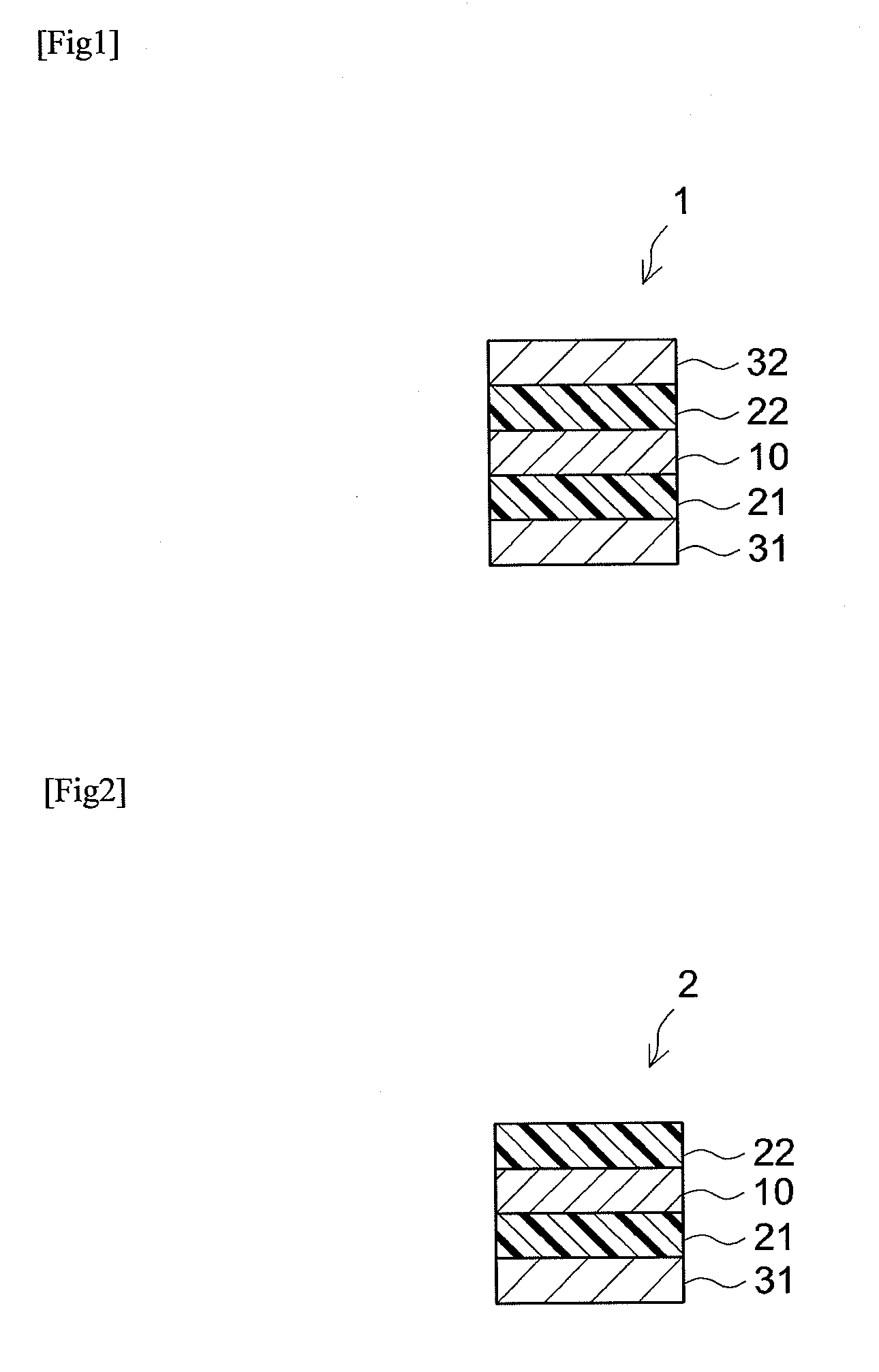Double-sided adhesive pressure-sensitive adhesive sheet
a pressure-sensitive adhesive and double-sided technology, applied in the direction of film/foil adhesives, weaving, synthetic resin layered products, etc., can solve the problems of interlaminar fracture, interlaminar fracture, and residue (adhesive residue) stemming from the psa layers and remaining on the adherends
- Summary
- Abstract
- Description
- Claims
- Application Information
AI Technical Summary
Benefits of technology
Problems solved by technology
Method used
Image
Examples
example 1
A reaction vessel equipped with stirrer, thermometer, reflux condenser, dripping apparatus, and nitrogen inlet port was charged with 60 parts of distilled water and 0.1 parts of an emulsifier (sodium polyoxyethylene alkyl ether sulfate, trade name “Latemul E-118B”, by Kao), with stirring for 1 hour or longer at 60° C., under nitrogen gas flow. Then 0.1 part of 2,2′-azobis[N-(2-carboxyethyl)-2-methylpropionamidine]hydrate (trade name “VA-057”, by Wako Pure Chemical Industries) was added as a polymerization initiator.
As the monomer starting material there was prepared an emulsion of 85 parts of 2-ethylhexyl acrylate, 13 parts of methyl acrylate, 1.5 parts of acrylic acid, 0.5 parts of methacrylic acid, 0.02 parts of 3-methacryloxypropyltrimethoxysilane (trade name “KBM-503”, by Shin-Etsu Chemical), 0.033 parts of dodecanethiol (chain transfer agent), and 1.9 parts of the above emulsifier, in 28.6 parts of distilled water.
The resulting emulsion of monomer starting material was dripped ...
example 2
A double-sided PSA sheet was obtained in the same way as in Example 1, but using herein a nonwoven fabric B (Manila hemp 100%, bulk density 0.43 g / cm3, grammage 22.9 g / m2, thickness 53 μm, MD tensile strength 41.2 N / 15 mm, CD tensile strength 31.4 N / 15 mm) instead of the nonwoven fabric A.
example 3
A double-sided PSA sheet was obtained in the same way as in Example 1, but using herein a nonwoven fabric C (Manila hemp 100%, bulk density 0.508 g / cm3, grammage 25.4 g / m2, thickness 50 μm, MD tensile strength 38.6 N / 15 mm, CD tensile strength 26.8 N / 15 mm) instead of the nonwoven fabric A.
PUM
| Property | Measurement | Unit |
|---|---|---|
| density | aaaaa | aaaaa |
| peel strength | aaaaa | aaaaa |
| peel strength | aaaaa | aaaaa |
Abstract
Description
Claims
Application Information
 Login to View More
Login to View More - R&D
- Intellectual Property
- Life Sciences
- Materials
- Tech Scout
- Unparalleled Data Quality
- Higher Quality Content
- 60% Fewer Hallucinations
Browse by: Latest US Patents, China's latest patents, Technical Efficacy Thesaurus, Application Domain, Technology Topic, Popular Technical Reports.
© 2025 PatSnap. All rights reserved.Legal|Privacy policy|Modern Slavery Act Transparency Statement|Sitemap|About US| Contact US: help@patsnap.com


